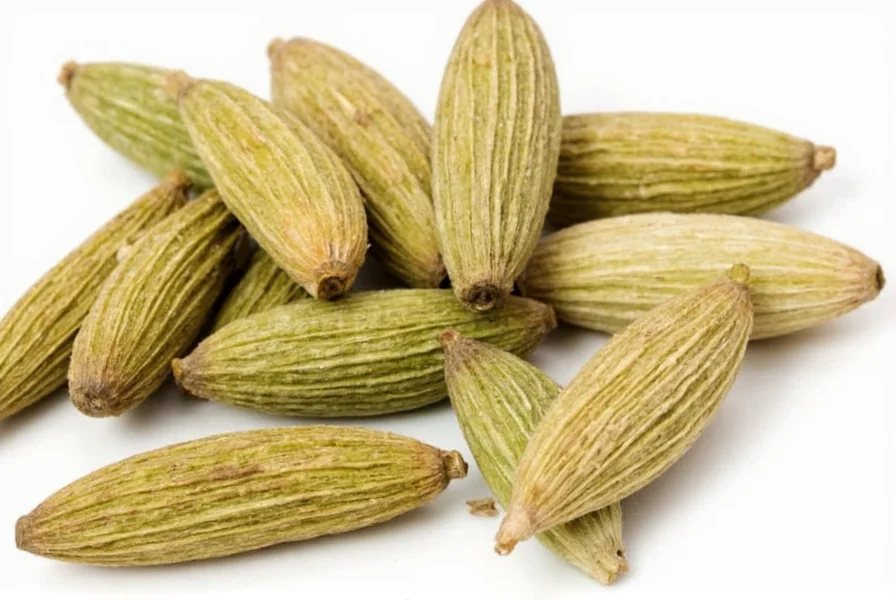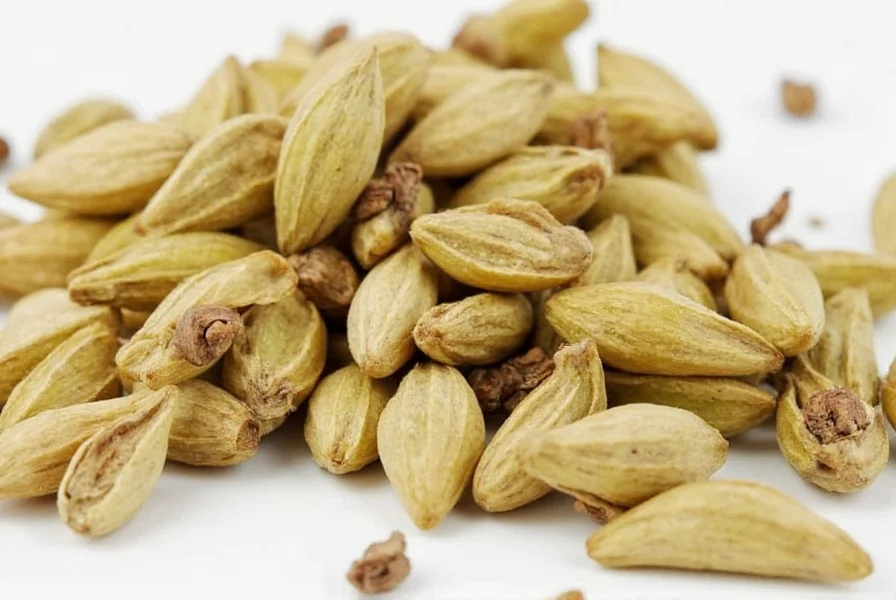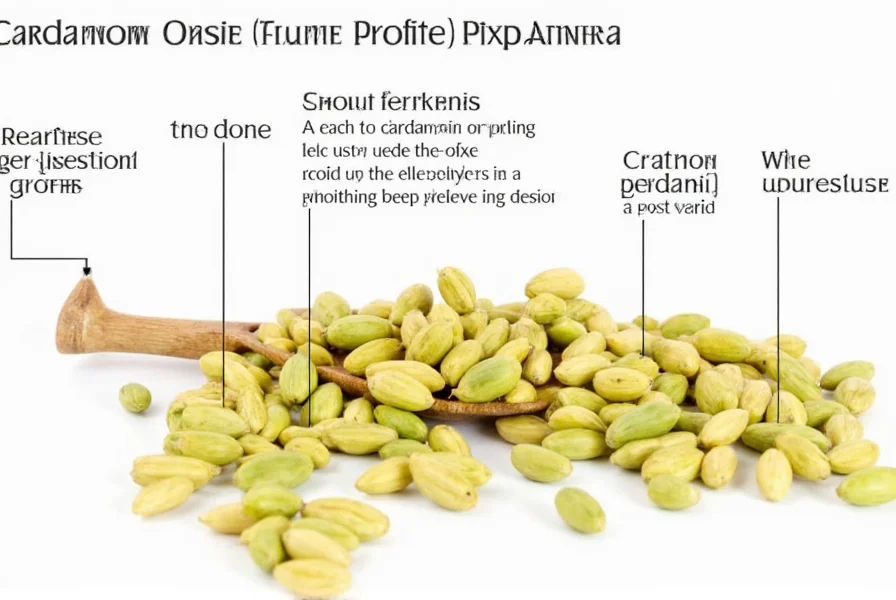Understanding what cardamom tastes like requires appreciating its multifaceted flavor profile that distinguishes it from other spices. This ancient spice, native to India and now cultivated across tropical regions, offers a sensory experience that has captivated palates for millennia. When you crush a cardamom pod between your fingers, the first aroma that emerges is distinctly citrusy, followed by complex floral notes and a subtle warmth that builds gradually.
The Flavor Components of Cardamom
Cardamom's taste profile contains several distinct elements that work in harmony:
| Flavor Component | Description | Intensity Level |
|---|---|---|
| Citrus | Lemon, orange, and bergamot notes | High |
| Floral | Subtle rose and lavender undertones | Medium |
| Spicy | Warmth without heat, similar to mild pepper | Medium-Low |
| Minty/Eucalyptus | Cooling herbal notes | Low |
| Earthy | Subtle base note, more prominent in black cardamom | Variable |
Green vs Black Cardamom: Understanding the Taste Difference
When exploring how to describe cardamom flavor, it's essential to distinguish between the two primary varieties:
Green Cardamom (Elettaria cardamomum) - The most common variety found worldwide, green cardamom offers a sweeter, more delicate flavor profile. Its taste is predominantly citrus-forward with pronounced lemon notes, balanced by floral elements and a gentle warmth. This variety works beautifully in both sweet applications like Scandinavian baking and savory dishes such as Indian biryanis. The flavor is complex yet approachable, making it the preferred choice for most Western applications.
Black Cardamom (Amomum subulatum) - Larger and darker than its green counterpart, black cardamom delivers a dramatically different taste experience. Its flavor profile features smoky, camphorous notes with earthier undertones. The citrus elements are less pronounced, replaced by more medicinal and resinous qualities. This variety shines in robust savory dishes like North Indian meat curries and Chinese five-spice powder. Understanding green cardamom vs black cardamom taste is crucial for proper culinary application.

How Form Affects Cardamom's Flavor
The form in which you use cardamom significantly impacts its taste profile:
- Whole Pods - Provide the most subtle flavor release, ideal for infusing liquids like rice pudding or chai. The flavor develops slowly during cooking.
- Seeds Only - Crushing just the black seeds inside the pod delivers a more concentrated, slightly more bitter flavor than using the entire pod.
- Ground Cardamom - Offers immediate flavor impact but loses potency quickly. Ground cardamom has a more uniform but less complex flavor than freshly crushed pods.
Freshly grinding cardamom just before use yields the most vibrant flavor. The volatile oils responsible for cardamom's distinctive taste begin dissipating immediately after grinding, which explains why pre-ground cardamom often tastes flat compared to freshly prepared spice.
Culinary Pairings That Enhance Cardamom's Natural Flavor
Understanding what does cardamom taste good with can transform your cooking. This spice complements:
- Dairy products - Cardamom's citrus notes cut through richness in rice pudding, ice cream, and milk-based sauces
- Citrus fruits - Amplifies the natural lemon and orange notes in the spice
- Other warm spices - Works harmoniously with cinnamon, cloves, and nutmeg in spice blends
- Meat dishes - Particularly lamb and chicken, where its floral notes balance savory elements
- Chocolate - Creates a sophisticated flavor pairing in desserts
When incorporating cardamom into recipes, remember that its flavor intensifies with cooking time. For subtle applications, add ground cardamom near the end of cooking. For deeper flavor integration, add whole pods early in the cooking process and remove before serving.
Common Misconceptions About Cardamom's Taste
Several myths persist about how cardamom tastes that deserve clarification:
- "Cardamom is very spicy" - Despite being a "warm" spice, cardamom contains no capsaicin and doesn't produce heat like chili peppers
- "All cardamom tastes the same" - Quality varies dramatically based on origin, with Malabar cardamom from India offering superior flavor complexity compared to lower-grade varieties
- "Cardamom tastes medicinal" - While it has traditional medicinal uses, properly used cardamom adds sophisticated flavor rather than medicinal notes
- "Cardamom only works in sweet dishes" - This spice plays a crucial role in savory applications across Middle Eastern, Indian, and Scandinavian cuisines

Using Cardamom Effectively in Your Cooking
To maximize cardamom's distinctive flavor in your cooking:
- Always check freshness by smelling the pods - they should have a strong, citrusy aroma
- For best results, lightly crush whole pods before use to release essential oils
- When substituting ground cardamom for whole pods, use 1/4 teaspoon ground for each pod called for in the recipe
- In baking, pair with complementary flavors like orange zest or vanilla to enhance cardamom's natural profile
- Start with small amounts (1/8 teaspoon ground per serving) and adjust to taste, as cardamom can dominate other flavors
Cardamom's unique flavor profile makes it one of the most versatile spices in the culinary world. Whether you're wondering what does cardamom taste like in coffee or how it enhances baked goods, understanding its complex flavor components allows you to use this ancient spice with confidence and creativity.
Frequently Asked Questions
What does cardamom taste similar to?
Cardamom's flavor profile shares characteristics with several other ingredients but remains unique. Its citrus notes resemble lemon and orange zest, while its floral elements recall subtle hints of rose. The warm, slightly medicinal quality has distant similarities to eucalyptus or mint, but without the cooling sensation. Some people detect faint parallels to cinnamon in its warmth, though cardamom lacks cinnamon's sweetness. No single spice perfectly replicates cardamom's complex combination of citrus, floral, and warm elements.
Why does my cardamom taste bitter?
Bitter cardamom typically indicates one of three issues: using only the black seeds without the pod (which are naturally more bitter), using stale or low-quality cardamom, or overusing the spice. The outer pod contains the most desirable citrus and floral notes, while the seeds alone deliver more intense, slightly bitter flavors. For optimal taste, use whole pods or freshly grind both pod and seeds together. Fresh cardamom should have a bright, complex aroma - if it smells musty or faint, it's likely past its prime and will taste bitter.
Does cardamom taste good in coffee?
Yes, cardamom complements coffee exceptionally well, creating what many consider an ideal flavor pairing. The citrus notes in cardamom cut through coffee's bitterness while enhancing its natural chocolatey and nutty undertones. In Middle Eastern coffee traditions, a single cardamom pod is often added to the brewing pot, releasing just enough flavor to transform the coffee without overwhelming it. The resulting beverage has a sophisticated complexity that plain coffee lacks. For best results, add whole cardamom pods during brewing rather than using ground cardamom, which can become muddy in texture.
How would you describe cardamom flavor to someone who's never tasted it?
Imagine the bright freshness of lemon zest combined with the delicate floral notes of rosewater, then blended with the warm embrace of mild pepper and a whisper of mint. Cardamom delivers all these elements in perfect harmony - citrusy but not sour, floral but not perfumy, warm but not hot. It's simultaneously refreshing and comforting, with a complexity that reveals new dimensions as you taste. Unlike many spices that deliver a single dominant note, cardamom offers a layered experience where different flavor elements emerge at different stages of tasting.
Does cardamom taste different when cooked versus raw?
Absolutely. Raw cardamom has a more pronounced citrus and floral profile with brighter, more volatile notes. When cooked, especially in liquid-based dishes, the flavor transforms - the citrus elements mellow while the warmer, spicier notes become more prominent. In baking, cardamom's flavor integrates with other ingredients, creating a more rounded, complex taste. Prolonged cooking can cause some flavor loss, which is why many recipes call for adding cardamom later in the cooking process. Interestingly, cardamom's flavor continues to develop and improve in dishes that are prepared in advance, making it ideal for recipes that benefit from resting time.











 浙公网安备
33010002000092号
浙公网安备
33010002000092号 浙B2-20120091-4
浙B2-20120091-4